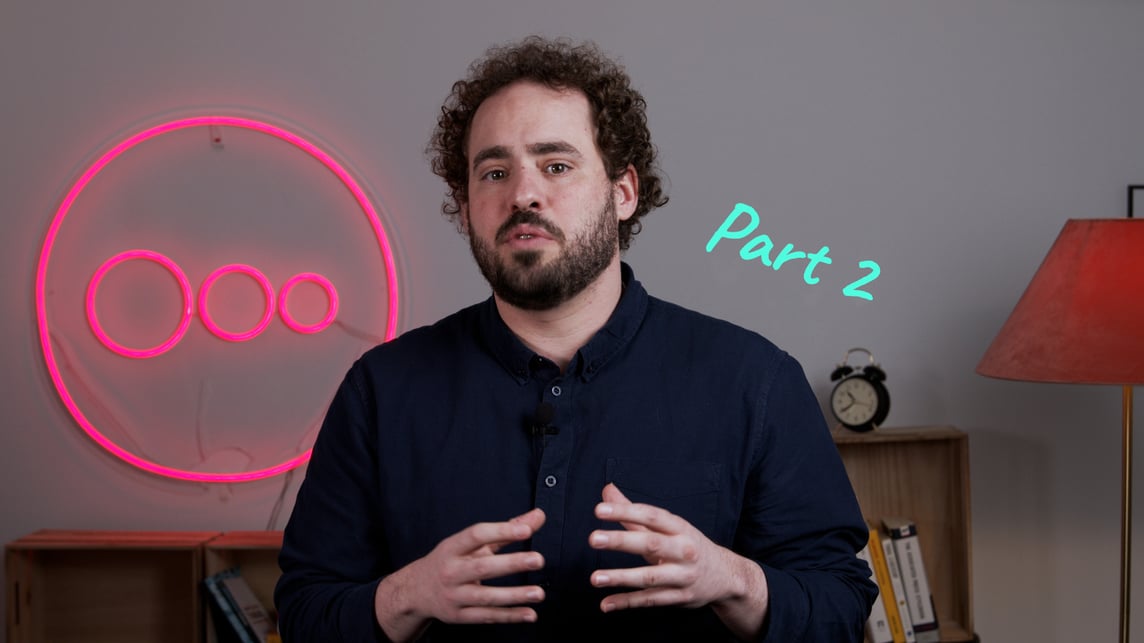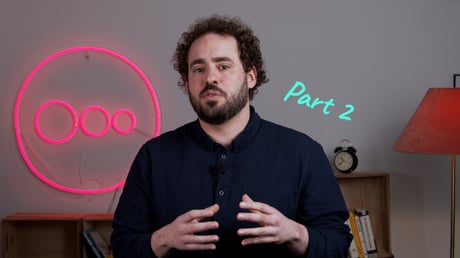-
 Written by Sean Dougherty
Written by Sean DoughertySenior Brand Creative at Funnel, Sean has more than 15 years of experience working in branding and advertising (both agency and client side). He's also a professional voice actor.

Automation and data loss are totally upending the digital marketing industry. We’re having to rescope how we work and how we can influence the performance of our marketing tactics.
But what about the day-to-day work of a performance marketer? How are automation and data loss affecting the granular activities?
While we may bemoan the loss of our niche, fine-tuning controls, there is a silver lining to the automation and data loss cloud.
Less manual work
Rejoice! The machines are here to help take manual work off of our plates.
Given the current state of advanced algorithms and machine learning, modern technologies are perfectly suited to assume various manual processes. That means less of the boring and repetitive work for you.
How, you ask?
Let’s imagine you are running some Google Ads. In the “old days,” a performance marketer would need to run lengthy keyword research, assign keywords to single keyword ad groups, think about match types, assign individual bids for each keyword, and more. And that’s just for the campaign set up.
Performance marketers also had to spend a lot of time on the Google Ads platform to ensure everything was running smoothly. Luckily, those days are gone.
The modern approach to Google Ads
Google is changing its match types while pushing performance marketers to broaden their targeted keywords. They also push you to focus less on assigning specific bids and costs-per-clicks (CPCs). Instead, Google wants to turn your focus to return on investment, marketing efficiency ratio, and conversion value.
The strategy here is that the algorithms can work with such scale and speed that they can land on the optimal keyword targets, bids, and CPCs much more quickly and accurately than humans. However, it’s still we humans that know our broader marketing and business goals — hence the focus on higher-level KPIs.
Performance marketers can’t take a set-it-and-forget-it approach to these algorithms, though. You still need to give it some oversight.
And before you get ahead of yourself, providing oversight and monitoring business-wide KPIs aren’t the only roles for humans in the future of performance marketing.
Creativity is key
As much as the algorithms have assumed control of manual processes, creativity is still a critical role for humans to play.
Just look at social media, where the biggest change to the platforms from a digital marketer’s perspective has probably been in the audiences.
Previous best practice was to meticulously craft your campaign audience. Marketers would build niche profiles based on demographics and interests, then segment those into prospecting and retargeting phases of the campaign.
Nowadays, though, the loss of cookies and other means to track users across websites and devices has made this strategy almost obsolete. That’s because less behavioral data means less ability to define user interests on each social platform. Users become a bit more vague and anonymous.
No more niche?
In response, performance marketers are adopting broader audience targeting. As they move away from their highly niche audiences, they are instead focusing on the creatives themselves.
Specifically, marketers focus on what visual asset (be it image, gif, or other) will get people to engage and convert.
New team structures
While these examples may be focused on search and social, they are part of a broader paradigm shift across the industry. In order to keep up with these shifts, top-performing digital marketing teams are also rethinking their structure.
Many teams used to follow a siloed sort of structure. That meant one small team or individual dedicated to social media, one for paid search, one for SEO, etc. Now, teams are taking an integrated approach that works across all of these digital marketing avenues.
Automation is, again, driving this change a bit. Since marketers need to spend less time on manual processes and working with individual ad managers, they can work more holistically. Plus, with tools like a marketing data hub, you can analyze and work off the performance data from all of your ad platforms at once.
The benefits of holistic analysis
By analyzing performance at a higher, more data-mature level, digital marketers will shift away from channel-specific return on ad spend (ROAS), and they instead will analyze against business efficiency metrics.
That means less of these annoying vanity metrics, and more impactful KPIs that show marketing can drive the business forward. To be sure, digital marketers will still need to analyze the contribution of the media mix to overall performance, but the days of ROAS are numbered.
From output to input
Another change in the daily work of a performance marketer is the shift from data output to data input. Hear us out for a second.
The old paradigm saw performance marketers making small tweaks and optimizations to get every last drop of performance from each ad platform. Given that we have fewer of those controls available to us, we are better served focusing on identifying insights and signals that we can feed back into the platforms.
The algorithms can then absorb this performance data from your on-site conversion (thanks to server-side tracking and conversion APIs) to refine their own strategies automatically.
2+2=5
At the end of the day, humans and machines still rely on each other to deliver the best marketing performance. It’s not so much of a competition for control rather than a collaboration for success.
Algorithms are excellent at automating repetitive tasks, freeing up humans to perform more complex work and critical thinking. Humans can, then, feed the algorithms with insights from real-world performance and goals.
We both help each other level-up our respective games. Need proof?
Boston Consulting Group ran a study that found advanced algorithms can boost platform performance by 20% compared to humans running the same campaign. However, when humans are added back into the mix with the role of the modern performance marketing, those same campaigns saw an additional 15% gain in performance.
The future is here!
The emergence of advanced AI-driven algorithms have ushered in a new reality for performance marketers. While this brave new world may be intimidating, it also represents a huge opportunity for those of us willing to work together with these powerful machines.
Those digital marketing teams that figure this out early on will see the biggest boost to overall performance. However, it’s never too late to adopt the best practices of a new paradigm.
Don’t worry, it will be an uncomfortable and sometimes messy shift for us all. But by focusing on the bright side of automation, leaning on new technologies to avoid the impacts of data loss, and working collaboratively with powerful AI tools, we can experience incredible growth in our marketing performance.
Learn more: Future of performance marketing part 1 and part 3.
-
 Written by Sean Dougherty
Written by Sean DoughertySenior Brand Creative at Funnel, Sean has more than 15 years of experience working in branding and advertising (both agency and client side). He's also a professional voice actor.
